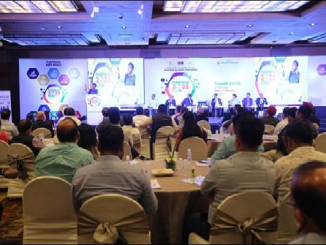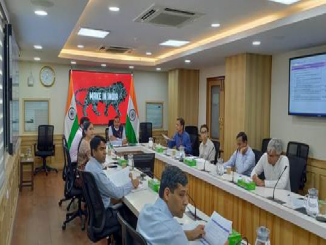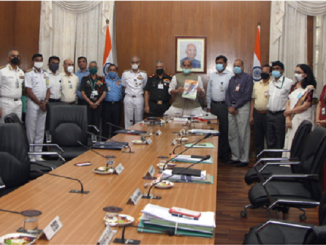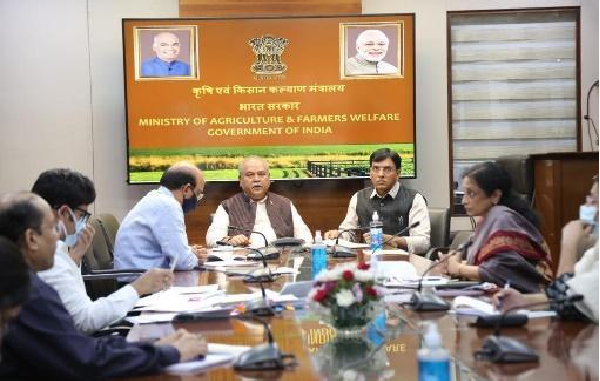
May 02:Shri Narendra Tomar, Union Agriculture Minister, and Dr. Mansukh Mandaviya, Union Minister of Chemicals and Fertilizers and Health and Family Welfare jointly chaired a review meeting on the situation of Fertilizers with the agriculture ministers of States/UTs today virtually. The Union Cabinet chaired by the Prime Minister, Shri Narendra Modi, had approved the proposal of the Department of Fertilizers for Nutrient Based Subsidy (NBS) rates for Phosphatic and Potassic (P&K) fertilizers for Kharif Season – 2022 (from 01.04.2022 to 30.09.2022). Subsidy approved by the Cabinet for the NBS Kharif-2022 (from 01.04.2022 to 30.09.2022) is Rs. 60,939.23 Crores including support for indigenous fertilizer (SSP) through freight subsidy and additional support for indigenous manufacturing and imports of DAP.
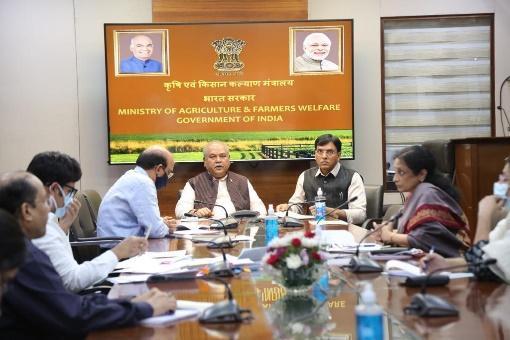
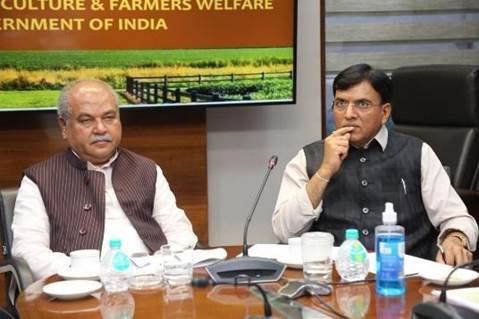
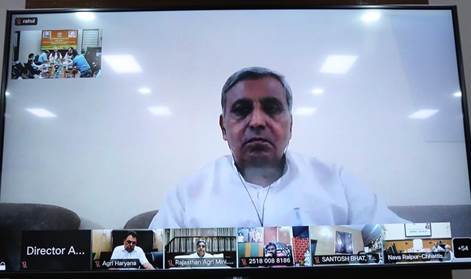
Speaking on the occasion, Dr. Mansukh Mandaviya said, “With the government’s proactive steps in pre-positioning Urea, DAP and NPK, and other fertilizers supply, currently, we have more stock for a supply of fertilizers for this Kharif season than the demand.” He also advised states to keep providing farmers with adequate and accurate information regarding availability and to not create either a panic situation or misinformation related to fertilizer stocks.
Stressing the need to tackle the issues of malpractices like hoarding, black-marketing, or diversion of fertilizers, the Union Minister said that the government will take strict action in case of such scenarios. He also urged States to make farmers aware of recent trends in the fertilizers market and alternate fertilizers and agriculture practices like the use of nano urea, and organic farming should be promoted.
The Union Minister informed that the increase in the international prices of Di-ammonium phosphate (DAP) and its raw materials have been primarily absorbed by the Union Government. The Union Government has decided to provide a subsidy of Rs. 2501 per bag on DAP instead of the existing subsidy of Rs.1650 per bag which is a 50% increase over the last year’s subsidy rates. The increase in the prices of DAP & its raw material is in the range of approx. 80%. It will help farmers to receive notified P&K fertilizers at subsidized, affordable, and reasonable rates and support the agriculture sector, he added.
The Union Minister also advised States to undertake micro-planning of fertilizer movement within the states strictly as per the requirement and do timely unloading of rakes for better utilization of the rolling stock. States were also advised to do adequate prepositioning of fertilizers, especially in the Co-operative Channel.
While discussing the situation of Fertilizers in India, Shri Narendra Singh Tomar, Union Minister of Agriculture and Farmers welfare stated that the agriculture sector is a vital sector providing employment to a large population. “We are committed to providing support for agriculture, which is a priority sector for us. Be it an investment, Kisan Credit Card, insurance schemes, crop diversification, or horticulture, we have always worked to strengthen this sector. In agricultural production, we are always leading and are a global leader. Fertilizer is an important component of agriculture production and our objective is to reduce import dependency on various fertilizers. Under the leadership of Hon’ble Prime Minister, we are committed to ensuring the availability of affordable fertilizers to our farmers”.
He further said that in order to reduce the agricultural import dependence, we should work together to become AtmaNirbhar in the agriculture sector too. Our farmers produce high-quality products and are witnessing huge export demand in the sector. We also look forward to suggestions in further improving the agricultural sector in India, be it use of technology or any other initiative, we want farmers to benefit, he added.
Secretary, Department of Fertilizers, Shri. RK Chaturvedi gave a brief snapshot of the Fertilizer situation in the country. Through a detailed presentation, Assessment and Supply of Fertilizers background, Fertilizer Consumption in last three Years, Trends in International Prices of Fertilizers/Raw Materials in last two Years, Year-wise Fertilizer Subsidy during last Ten Years, Per Bag Subsidy Increase and MRP of Fertilizers, Short-term/Long-term Agreements for Fertilizer Import, Estimated Requirement and Availability in Kharif -22, expectations from States, etc were discussed along with the major challenges in ensuring fertilizer availability in 2021-22 and strategies adopted to ensure fertilizer availability to farmers.
While concluding, the Union Chemical and Fertilizers Minister said that despite the pandemic and rise in prices of raw materials at the international level, we have managed to keep the fertilizers price at a very minimum rate by increasing subsidies, so that our farmers don’t suffer. This year, around 2.5 lakh Crore subsidies will be given to farmers. We should make plans so that the fertilizers are utilized at a balanced level at ground level. He also urged states to take note of how much fertilizers are available and needed at each district level and keep an eye on how much fertilizers each farmer has bought in order to avoid malpractice or any divergence or black-marketing.
Background:
The government is making available fertilizers, namely Urea and 25 grades of P&K fertilizers to farmers at subsidized prices through fertilizer manufacturers/ importers. The subsidy on P&K fertilizers is being governed by NBS Scheme w.e.f 01.04.2010. In accordance with its farmer-friendly approach, the Govt. is committed to ensuring the availability of P&K fertilizers to the farmers at affordable prices. In view of the steep increase in the international prices of fertilizers & inputs i.e. Urea, DAP, MOP, and Sulphur, Government has decided to absorb the increased prices by increasing subsidies on P&K fertilizers including DAP. The subsidy would be released to fertilizer companies as per approved rates so that they can make available fertilizers to farmers at an affordable price than it would have been otherwise.
****
Disclaimer: We donot claim that the images used as part of the news published are always owned by us. From time to time, we use images sourced as part of news or any related images or representations. Kindly take a look at our image usage policy on how we select the image that are used as part of the news.
